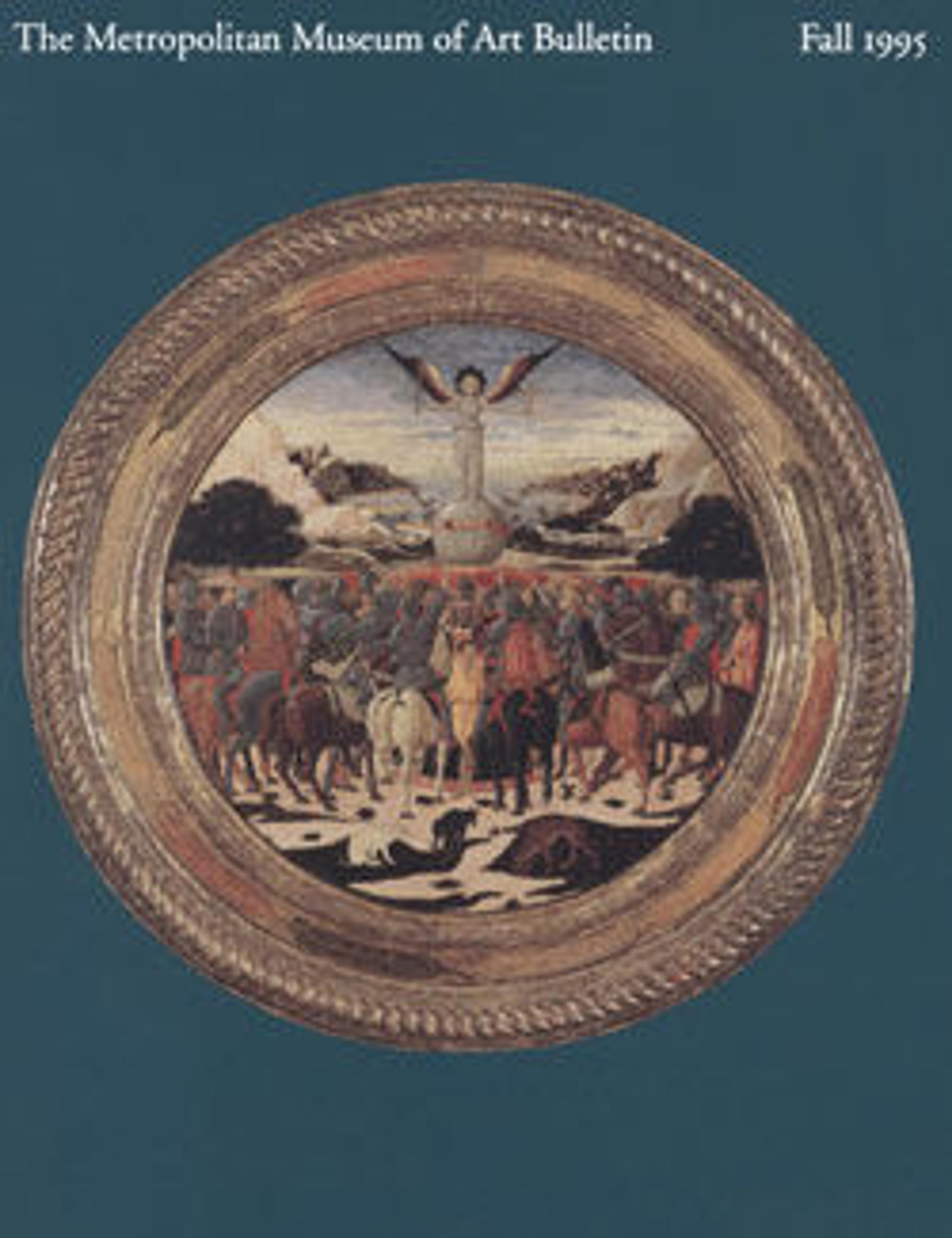Woman's Dress
Women's wraparound dresses, made in the Andes of southern Peru during late preconquest centuries, were worn pinned at one shoulder and held in place by a wide belt. Basically such dresses when worn were large rectangles that were folded over at the top to form a kind of wide collar or double bodice. Those with panels of an intricately repeated pattern top and bottom, such as this example that is folded over at the top, were carefully balanced visually, the wide panels effectively framing the ordered diagonal elements in the center. Consistant with the Chuquibamba textile style, this dress is thought to have been woven in the southern Andean region near Arequipa, and to have been contemporary with Inca textiles that were made within a similar highland textile tradition. It was a tradition based on the use of camelid hair, here probably alpaca, with a design program of small scale repeated elements, and strong color of closely related hue. Two shades of red, a dark blue, and a dark green, were used here, all of which are well set off by a gleaming white.
The Chuquibamba textile style has only recently been distinguished from the larger body of Inca work, and women's dresses isolated from among other large rectangular pieces that have been called mantles.
The Chuquibamba textile style has only recently been distinguished from the larger body of Inca work, and women's dresses isolated from among other large rectangular pieces that have been called mantles.
Artwork Details
- Title: Woman's Dress
- Date: 14th–early 16th century
- Geography: Peru, Chuquibamba
- Culture: Chuquibamba
- Medium: Camelid hair
- Dimensions: H. 51 1/2 x W. 60 1/2 in. (130.8 x 153.7 cm)
- Classification: Textiles-Woven
- Credit Line: Purchase, Pfeiffer Fund and Arthur M. Bullowa Bequest, 1995
- Object Number: 1995.109
- Curatorial Department: The Michael C. Rockefeller Wing
More Artwork
Research Resources
The Met provides unparalleled resources for research and welcomes an international community of students and scholars. The Met's Open Access API is where creators and researchers can connect to the The Met collection. Open Access data and public domain images are available for unrestricted commercial and noncommercial use without permission or fee.
To request images under copyright and other restrictions, please use this Image Request form.
Feedback
We continue to research and examine historical and cultural context for objects in The Met collection. If you have comments or questions about this object record, please contact us using the form below. The Museum looks forward to receiving your comments.
